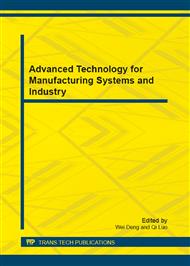p.278
p.283
p.289
p.297
p.302
p.315
p.321
p.326
p.334
Inverse Design of Air-to-Air Missile System Based on Improved Genetic Algorithm
Abstract:
The inverse design of air-to-air missile system was researched according to its target performance database. Firstly the initial model and database of air-to-air missile were set based on a foregone and similar missile model which includes the database of aerodynamic coefficients, engine performance, mass properties, guidance law and so on. Then this initial model and database were optimally modified by using the improved elitist preserved genetic algorithm and flight simulation based on the 4-D motion differential equations of both the air-to-air missile and target vehicle. The inverse design algorithm globally minimized the performance errors which were obtained from the inversely designed envelopes compared with the desired target performance database of maximum intercept envelope and the maximum impossible escape (no-escape) envelope. The optimized numerical simulation results of inverse design are showing that both the average error and the maximum error of missile envelopes are very small and can be acceptable, which verified that the inverse design algorithm of system is high accuracy and reliable.
Info:
Periodical:
Pages:
302-314
Citation:
Online since:
November 2012
Authors:
Price:
Сopyright:
© 2012 Trans Tech Publications Ltd. All Rights Reserved
Share:
Citation:


